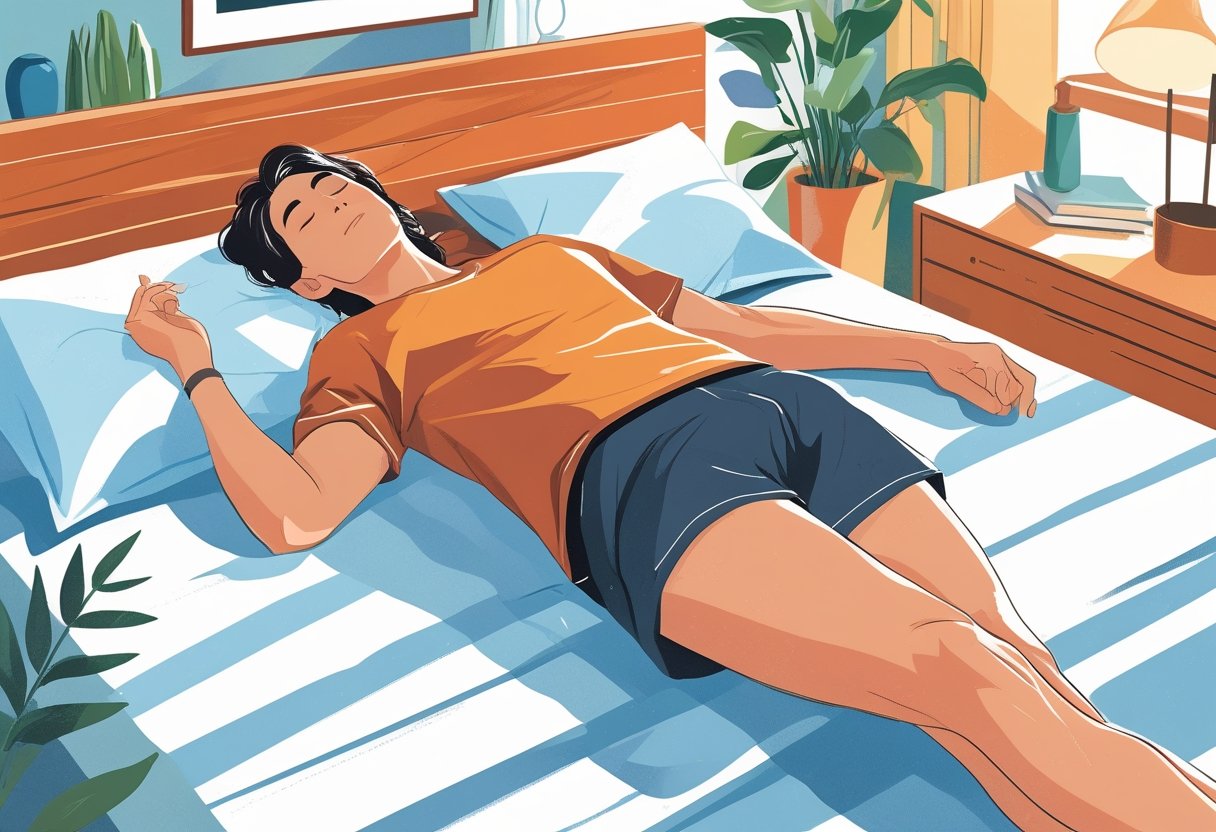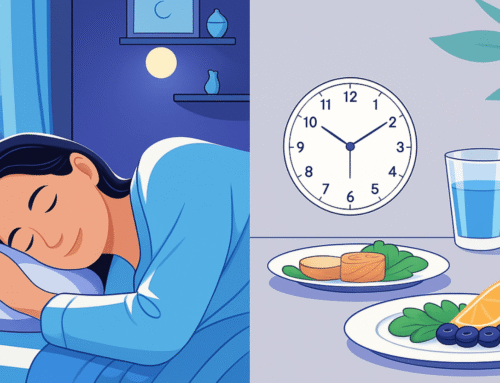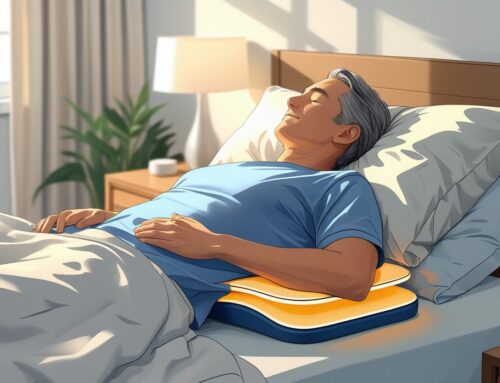Sleeping well with sciatica is a challenge since the pain often intensifies when lying down. The best way to sleep with sciatica is to choose a position that maintains spinal alignment and relieves pressure on the nerve, such as lying on the back with the knees elevated or lying on the side with a pillow between the legs. These positions reduce discomfort and allow for better rest.
Apart from sleeping positions, a supportive mattress and light stretching before bed may ease discomfort. Even small adjustments to how the body rests and recovers overnight can lead to better sleep and fewer sciatica flare-ups.
Key Takeaways
- Proper sleeping positions relieve pressure on the sciatic nerve and ease pain.
- Supportive mattresses and good body alignment enhance comfort through the night.
- Simple bedtime habits reduce sciatica pain and support more restful sleep.
- A medium mattress that supports spinal alignment and cushions pressure points, with proper sleep position, can reduce nerve pain and improve sleep quality.
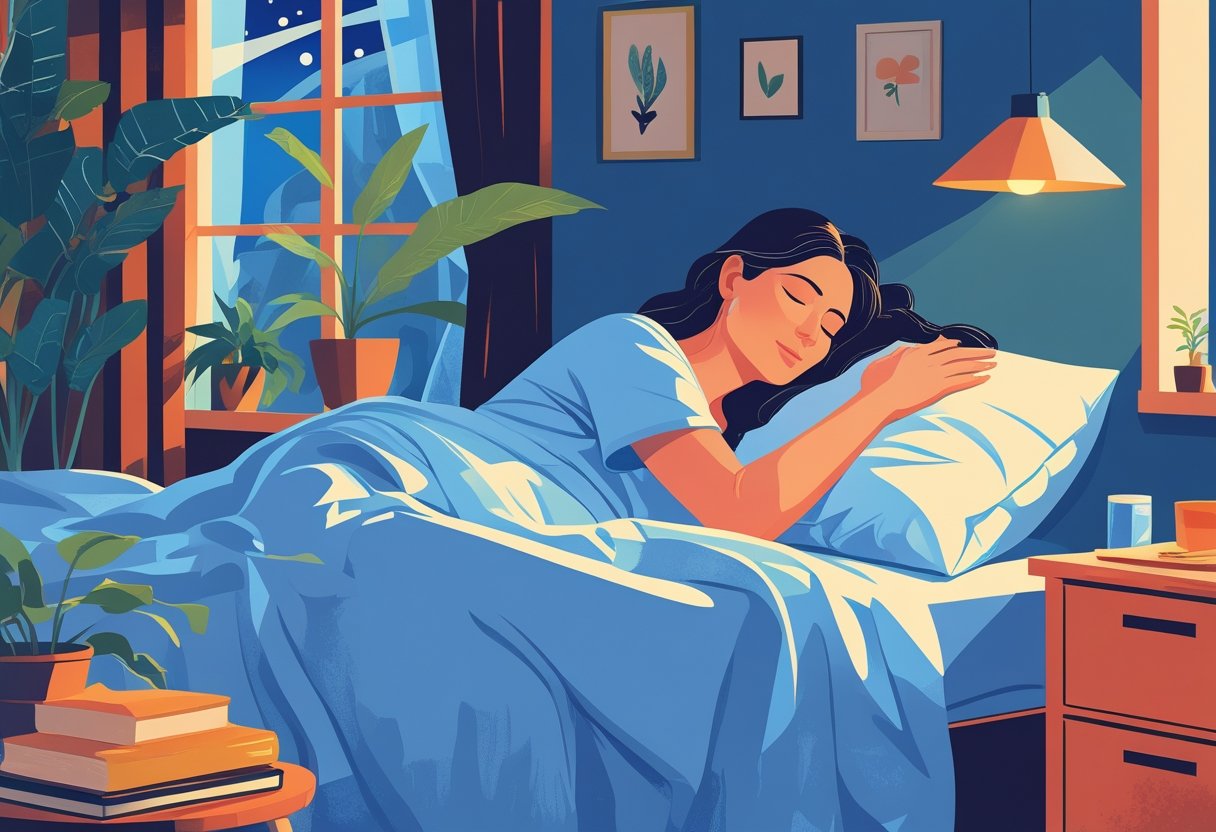
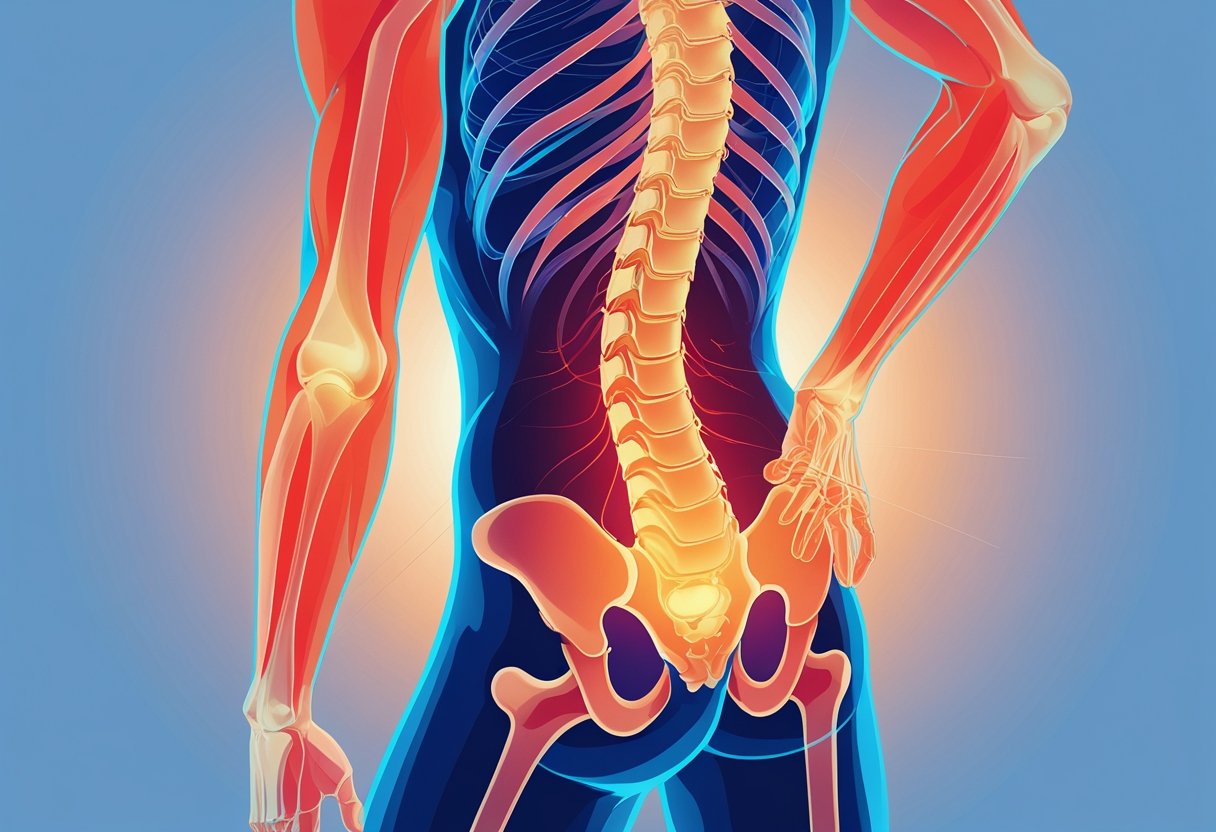
Sciatica causes pain along the sciatic nerve, which runs from the lower back through the hips and down each leg. This pain makes sleep difficult since it tends to worsen in certain positions. Understanding the causes and symptoms allows you to find ways to reduce discomfort and get better rest.
What Is Sciatica?
Sciatica results from irritation or compression of the sciatic nerve. As the longest nerve in the body, it begins in the lower spine and extends through the buttocks and legs. A herniated disc, spinal stenosis, or muscle strain pressing on the nerve often triggers this condition.
Pain usually affects only one side of the body and may range from a dull ache to sharp, burning sensations or numbness. Identifying the underlying cause allows you to choose proper sleep positions and treatments that ease discomfort.
How Sciatica Impacts Sleep
Lying down often aggravates sciatic nerve pain. Pressure on the lower back and legs tends to increase during rest, which causes discomfort. Many people with sciatica struggle to find a comfortable position or stay asleep through the night.
Sleeping on the stomach places strain on the spine and usually intensifies the pain. In contrast, lying on the back or side with proper support relieves pressure on the nerve and promotes better sleep. Elevating the knees or placing pillows for support can also ease pain.
Common Symptoms That Disrupt Rest
Sciatica often brings sharp, shooting pain, tingling, numbness, or muscle weakness in the leg or foot, symptoms that interfere with sleep. Pain may also flare up when turning over or changing positions in bed.
Since these symptoms tend to worsen at night, people often struggle to fall asleep or wake up repeatedly. A high quality mattress and thoughtful pillow placement reduce pressure on the nerve and help improve sleep quality.
Finding the right sleeping position can reduce pressure on the sciatic nerve and ease pain. Supportive pillows and adjusted limb placement often improve comfort and limit flare-ups.
Sleeping on Your Side
Sleeping on the side often provides relief from sciatica pain. It aligns the spine and reduces pressure on the lower back and nerve roots. For better support, a firm pillow between the knees keeps the hips level and prevents twisting. This reduces strain on the sciatic nerve. Lying on the pain-free side works best when possible, as it avoids pressure on the irritated nerve.
Pairing side sleeping with a supportive mattress can ease pain throughout the night. Adjust pillows to keep shoulders and hips properly stacked.
Sleeping on Your Back
Back sleeping also offers relief from sciatica. It maintains a neutral spine and avoids twisting. Placing a firm pillow under the knees helps preserve the natural curve of the lower back and reduces tension on the sciatic nerve. Avoid lying completely flat without support, since this may increase pressure. Use one pillow under the head and another under the knees to create gentle elevation. This setup often eases pain.
When done correctly, this position improves circulation and limits nerve compression.
Best Sleeping Position for Left-Sided Sciatica
With left-sided sciatica, lying on the right side usually works better. This avoids pressure on the irritated left nerve and allows it to relax. A pillow between the knees keeps the hips aligned and opens space in the lower back. This reduces tension in the left side. If side sleeping feels uncomfortable, back sleeping with a pillow under both knees also helps by keeping the spine neutral.
Switching positions during the night may be necessary to stay comfortable and minimize flare-ups.
How to Sleep with Sciatica Pain in the Right Leg
When sciatica affects the right leg, lying on the left side usually offers more comfort. This avoids direct pressure on the irritated nerve. A firm pillow between the knees keeps the legs aligned and supports the hips, helping reduce nerve compression. If back sleeping feels better, elevate the knees with one or two pillows. This decreases pressure on the right-sided nerve root.
Avoid sleeping on the right side or stomach, as these positions may twist the spine or compress the nerve and worsen the pain. Gentle position shifts throughout the night can help manage symptoms and improve sleep quality.
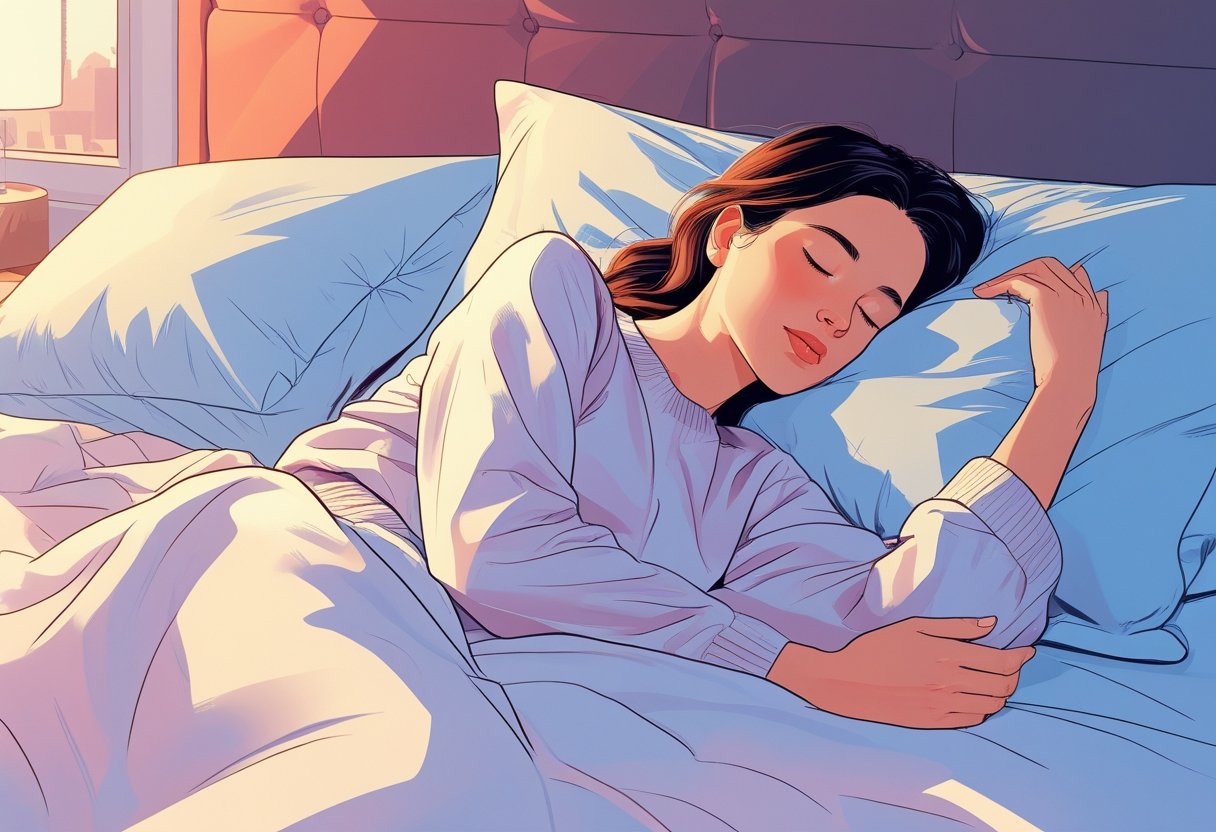
Sleeping with sciatica pain calls for careful attention to body position. Proper alignment relieves pressure on the sciatic nerve and eases discomfort. The right support and avoiding certain postures improve sleep quality significantly.
How to Lay Down with Sciatica
Lying on the back with knees slightly bent often works best for sciatica. This position keeps the spine aligned and takes pressure off the nerve. Elevating the knees with a pillow flattens the lower back against the mattress and brings relief.
If back sleeping causes discomfort, lying on the side with knees bent offers a solid alternative. Bending the knees slightly while keeping the spine straight helps maintain alignment. This reduces strain on the lower back and pelvis, which lowers sciatic pain during rest.
Sleeping flat on the stomach generally causes more harm. It increases pressure on the lower back and may worsen symptoms.
Using Pillow Support
Pillows provide crucial support for sleep when sciatica pain flares. A firm pillow between the knees while lying on the side keeps the hips and pelvis aligned and prevents spine twisting.
For back sleepers, placing a pillow under the knees helps relieve lumbar pressure and supports the spine’s natural curve. Adding pillows under the lower back or along the sides offers additional support when necessary.
A mattress that feels firm but not overly hard enhances pillow support. This setup keeps the body in a stable, neutral position throughout the night.
Avoiding Harmful Sleep Postures
Some sleeping positions increase sciatic pain. Avoid lying flat on the stomach, which stresses the lower back and aggravates the nerve. Steer clear of crossing the legs or twisting the spine sharply. These postures shift the pelvis out of alignment, tighten muscles, and irritate the sciatic nerve.
Remaining in one position too long may cause stiffness. Shifting gently during the night helps prevent discomfort and supports better sleep.
Proper habits can help when dealing with sciatica pain at night. Knowing how to position the body and what to avoid helps reduce discomfort and improves sleep quality.
Tips for a Comfortable Night’s Rest
Sleeping on the side or back typically eases sciatic pain. Placing a pillow between the knees when lying on the side keeps the hips aligned and reduces pressure on the lower back. For those who sleep on their back, placing a pillow under the knees supports the spine’s natural curve and relieves nerve tension.
Choosing a medium-firm mattress that supports the back, hips, and shoulders remains essential. It should cushion the body without sagging to avoid additional pain. A warm bath or light stretching before bed helps relax muscles and reduce stiffness.
Using a body pillow for added support increases overall comfort. Changing sleep positions gradually also reduces the risk of sudden flare-ups during the night.
Common Mistakes to Avoid
Sleeping on the stomach often worsens sciatica, as it places strain on the spine and increases nerve irritation. Overly soft mattresses should be avoided since they lead to poor alignment and greater discomfort.
Ignoring pain signals or staying in one position too long can intensify symptoms. Changing positions every few hours, if possible, allows for better circulation and reduced pressure on nerves. Heavy blankets or dense pillows that create pressure points should be avoided as well.
Caffeine and heavy meals before bed can interfere with sleep and make pain management more difficult. Pain medication should only be taken under medical supervision to manage nighttime discomfort safely and effectively.
Managing sciatic nerve pain before bed improves sleep quality and reduces discomfort. Effective methods focus on loosening tight muscles, calming inflammation, and reducing pain to ease the transition into restful sleep.
Stretching and Gentle Exercises
Light stretching before bed reduces pressure on the sciatic nerve. Targeting the lower back, hips, and hamstrings loosens muscles that might pinch the nerve. Simple movements like the knee-to-chest or seated hamstring stretch work well without straining the body.
Gentle exercises support blood flow and improve flexibility while avoiding stress on the affected area. Heavy or abrupt movements should be avoided. A consistent routine of 5–10 minutes each night prepares the body for rest and lowers the chance of nighttime flare-ups.
Heat and Cold Therapy
Applying heat before bed relaxes tight muscles and boosts circulation around the sciatic nerve. A warm bath or heating pad for 15–20 minutes often brings relief. Heat soothes tense areas and may ease nerve pressure.
Cold therapy reduces inflammation and numbs sharp pain. Applying an ice pack for 10–15 minutes lowers swelling when pain feels intense. Alternating heat and cold sometimes offers balanced relief by easing both pain and stiffness.
Pain Relief Strategies
Pain relief before bed may involve over-the-counter medications like ibuprofen or acetaminophen, which address both inflammation and pain. Following dosage guidelines helps ease the process of falling asleep.
Additional strategies include using supportive pillows to keep the spine in alignment, especially by placing a pillow between the knees when lying on the side. A full-length body pillow also helps prevent twisting, a frequent source of nighttime sciatic pain.
Combining these methods builds a consistent nighttime routine that targets sciatic pain from several angles. This approach improves comfort and makes it easier to sleep with sciatic nerve pain.
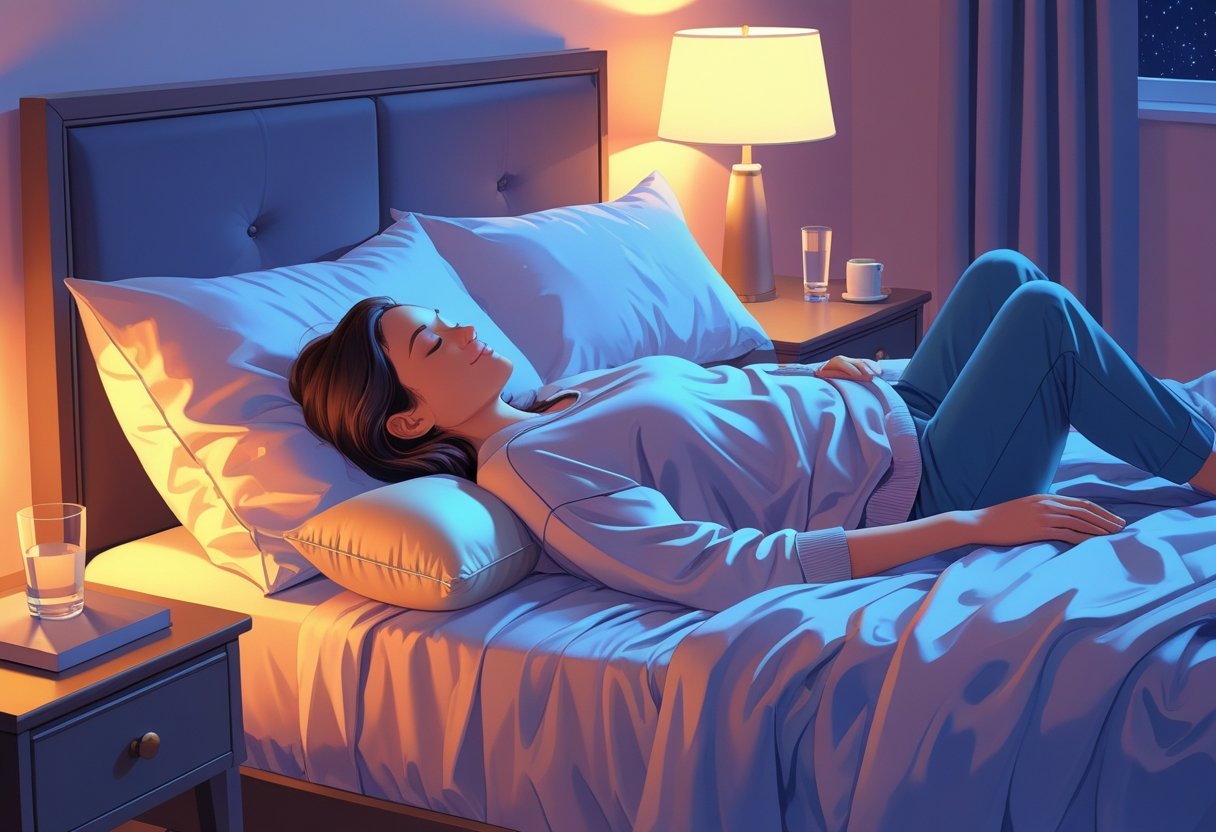
Good habits support better sleep when dealing with sciatica. Adjusting routines and long-term habits reduce pain and help maintain comfort during the night.
Evening Routines That Reduce Pain
A calm, consistent evening routine eases sciatica discomfort. Applying a heating pad or taking a warm bath about 30 minutes before bed relaxes muscles and reduces nerve pain. Avoid heavy meals, alcohol, and caffeine at least two hours before sleep because these disrupt rest and increase inflammation.
Gentle stretching focused on the lower back and hips prepares the body for rest and lessens pressure on the sciatic nerve. Limiting screen time before bed decreases sleep disruption. Bright light from devices interferes with melatonin, making it harder to fall asleep even when pain occurs.
Long-Term Strategies for Better Sleep
Changing sleep positions proves vital. Sleeping on the back with a pillow under the knees or on the side with a pillow between the legs supports proper spine alignment, which remains one of the best ways to sleep with sciatica.
A firm mattress that provides support without being too hard helps keep the spine neutral. Soft mattresses cause uneven pressure on the nerve.
Regular physical activity strengthens muscles supporting the spine. Low-impact exercises such as walking or swimming reduce pain over time.
Stress management techniques like meditation or deep breathing improve sleep quality. Reducing stress prevents muscle tension that worsens sciatica pain.
Mattress choice is important in managing sciatica pain during sleep. A mattress that’s too soft causes the body to sink, resulting in poor spinal alignment. This increases pressure on the sciatic nerve and worsens pain.
Conversely, very firm mattresses fail to provide enough cushioning. They create pressure points, especially around the hips and lower back, where sciatica pain commonly occurs.
Most experts recommend a medium to medium-firm mattress since it has a balance of support and comfort. This firmness level maintains proper spinal alignment while gently supporting the body’s curves.
Here are important mattress qualities for sciatica relief:
- Support: Keeps spine aligned and reduces nerve pressure.
- Comfort: Cushions hips and lower back to avoid pain points.
- Durability: Maintains firmness and support over time to prevent sagging.
People with sciatica should avoid overly soft mattresses because they cause sinking and spinal misalignment. Choosing a mattress with the right firmness improves sleep quality by reducing pain and supporting better posture.
For individuals experiencing sciatica pain, the Helix Dusk Luxe mattress provides a supportive and comfortable sleep surface that may help alleviate discomfort. Its combination of medium feel (6.5/10) support and targeted lumbar support makes it a viable option for those seeking relief from sciatica symptoms.
The hybrid design blends responsive foam with individually wrapped coils, ensuring pressure points around the hips and lower back receive adequate cushioning without sacrificing spinal alignment. Furthermore, the zoned lumbar support maintains the natural curve of the spine, reduces nerve compression, and promotes better posture throughout the night.
The mattress also features cooling technology to prevent overheating, which improves sleep quality and offers therapeutic benefits.

Frequently Asked Questions
Sleeping with sciatica requires careful attention to body position and methods to ease nerve pain. Managing discomfort depends on finding the right posture and using simple techniques to reduce irritation before bed.

